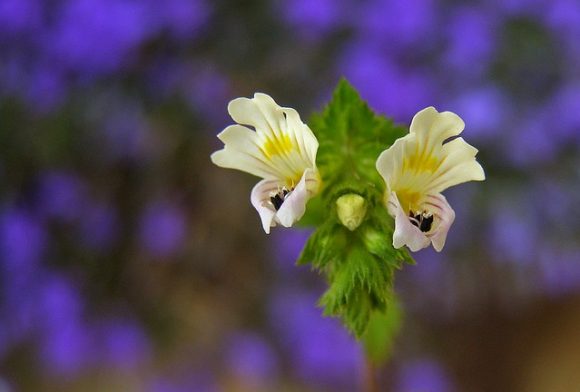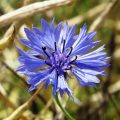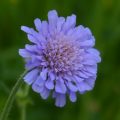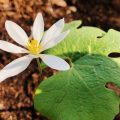- The Miraculous Shiny Bush Plant - January 18, 2021
- Colorful, Edible and Medicinal Celosia - January 10, 2021
- Radish, a Nutritional Power House - December 19, 2020
Eyebright or eyewort, botanically known as euphrasia officials, is a wildflower in the orobanchaceae family. It is native to Europe, North America, and Asia.
[Note: The Right Flowers is not a medical site. Knowledge of and information about the therapeutic benefits and applications of flowers, while known through the ages, does not constitute medical advice. If you are having health issues, you should consult with a physician.]
The plant’s botanical name, euphrasia, is a Greek word for gladness. This refers to the feeling of happiness people experience when their eye problems are finally resolved after using the herb.
Eyewort mostly grows in poor soils and has parasitic tendencies. This explains why it can grow in poor soils as it derives part of its nurture from the plants it preys on. In summer, eyebright produces tiny, white flowers with purple and yellow hues close to the center.
Eyebright’s leaves, flowers, and stems have been used as a herbal folk cure for generations. The plant is normally harvested late in summer when it is in bloom, cut into pieces, dried and stored for later use. The aerial parts of the plant are used to make infusions for washing eyes to get rid of irritations, infections and other common eye problems. Eyebright extracts are also used for supplementary purposes. It contains beneficial compounds such as tannins that have anti-inflammatory properties. The plant is also used for homeopathy purposes.
Eyebright has sufficient levels of thiamine, riboflavin, rutin, and copper. It is also rich in vitamins C, E and zinc, quercetin and luteolin as well as selenium which is ideal for eye health.
Zinc, copper and selenium help in maintaining healthy lenses and retinas while rutin gives nutritional support to the eyes. Quercetin and luteolin are known to inhibit the release of histamine. This is a compound that triggers allergic reactions such as runny eyes or nose.
The availability of these two antiallergens probably explains why eyebright has been used to treat eye conditions and other health problems triggered by allergens. Though there is insufficient scientific evidence supporting ancient herbal knowledge about the effectiveness of eyebright in treating conjunctivitis, there exists a small, inconclusive study published in the 2000 issue of the Journal of Alternative and Complementary Medicine. The study sought to evaluate eyebright as a treatment for conjunctivitis.
The study that involved 60 people suffering from conjunctivitis received eyebright extracts in the form of eye drops administered 5 times a day. After 14 days, researchers discovered that 50 of the people previously suffering from conjunctivitis had fully recovered, while 9 showed significant improvement. However, one patient did not respond to the herbal treatment and his condition seemed to worsen.
Basically, eyebright can be applied externally as eye drops or eyewashes. Alternatively, it can be taken internally in 400-500 mg capsules, administered 3 times a day.
Apart from being an ideal eye and allergy treatment, eyebright has been shown to contain a compound known as acubin. Preliminary studies show that acubin reduces the scarring of the heart occurring due to oxidative damage. This effectively minimizes the development of cardiovascular conditions such as heart attacks.
Eyebright may not have very impressive flowers, neither is it a famous herbal remedy. However, this wildflower holds a lot of potential in treating eye problems and managing allergies.





